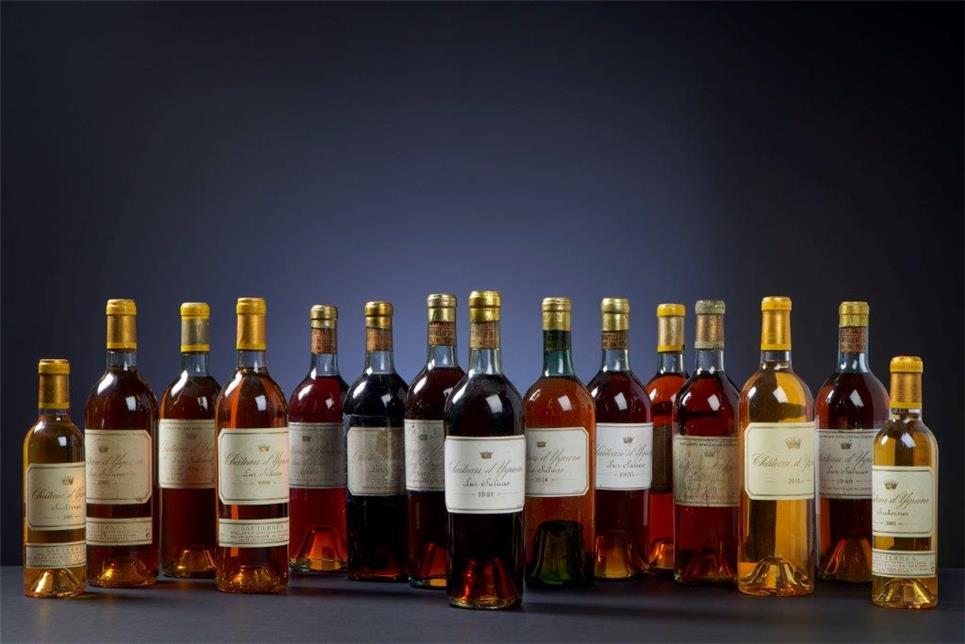
An illustrious wine from the mists
With 100 lots of Château d'Yquem in this April sale, every wine lover can indulge. We offer you the opportunity to bid on both younger and older vintages, with a collection that spans over 100 years, from 1905 to 2011, including the legendary 1921 vintage (lots 1121 & 1122)!
Jancis Robinson MW describes Château d'Yquem 1921 as follows:
You will find these special wines in lots 1114 to 1213, including not only ordinary bottles but also large formats such as magnums and a few methusalems (6 liters)!“Lively tawny with some green notes. Very very creamy nose, green. Fireworks - explosive. Elixir. Twang. Great ethereal lift. Tangy, twangy. Long and reverberating.” – 20/20, Jancis Robinson MW
The history of Château d'Yquem dates back to the Middle Ages, when the estate belonged to the King of England, at the time also Duke of Aquitaine. In 1453, after the end of the Hundred Years War, the region was annexed by the French King Charles VII and received its current nationality. Already at that time, the wine of Yquem was highly appreciated by wine lovers in London and far beyond.
In 1593, Jacques Sauvage, a local nobleman, obtained the rental rights to the domain of Yquem. A few years later, the Sauvage family began planting the current vineyards and building the chateau. It was not until 1711 that they became full owners of the estate. More than 70 years later, the name of Lur-Saluces appeared for the first time, when Françoise Joséphine de Sauvage d'Yquem married Count Louis Amédée de Lur-Saluces.
In 1855, the estate was elevated to the rank of Premier Cru Supérieur by Emperor Napoleon III on the occasion of the Universal Exhibition in Paris that same year. No other vineyard in the Sauternes or Barsac region has received this honor. The name and reputation of Château d'Yquem are definitively established from this moment.
The estate extends over approximately 126 hectares, of which 100 hectares are planted with Sémillon (80%) and Sauvignon Blanc (20%). Its location on the banks of the Ciron - a tributary of the Garonne - offers a specific microclimate to Sauternes. The confluence of the cold waters of the Ciron and the warm waters of the Garonne allows the morning mists to develop in autumn, favoring the development of noble rot (Botrytis Cinerea). This fungus is essential for the production of the best Sauternes wines, such as Château d'Yquem, and contributes to giving them their specific aromas and flavours.
The bouquet of young vintages is characterized by aromas of fruit (apricot, tangerine and sometimes tropical fruit) and vanilla and toast from the oak used for aging the wine. The old vintages have a very complex nose with notes of dried fruits (apricot, plum, marmalade), spices (saffron, cinnamon and liquorice) and flavors of crème brûlée and brioche. On the palate, there is always an exceptional balance between sweet and acid - a combination that also ensures its enormous aging potential - with the same aromas as on the nose and a legendary long finish.